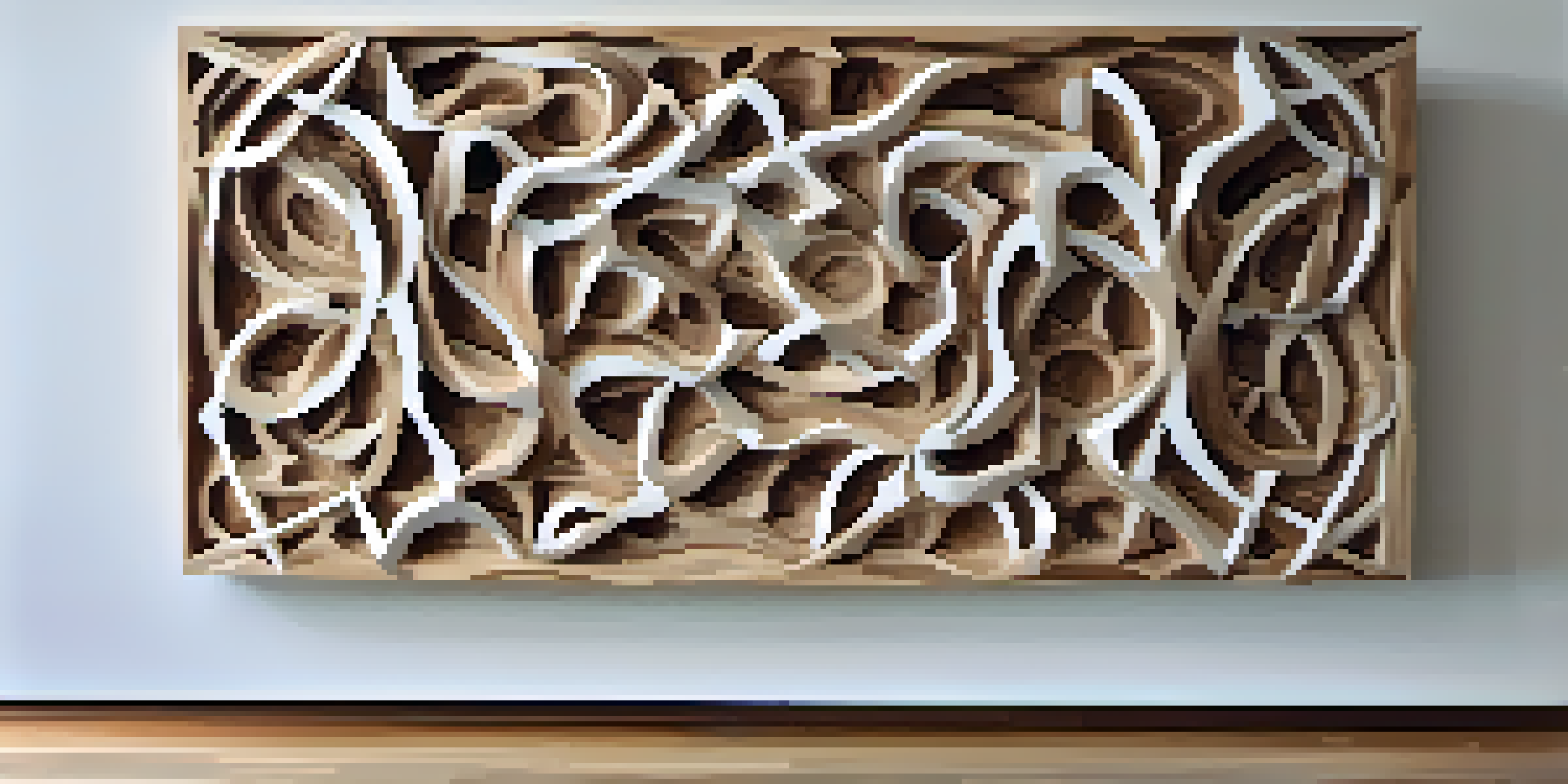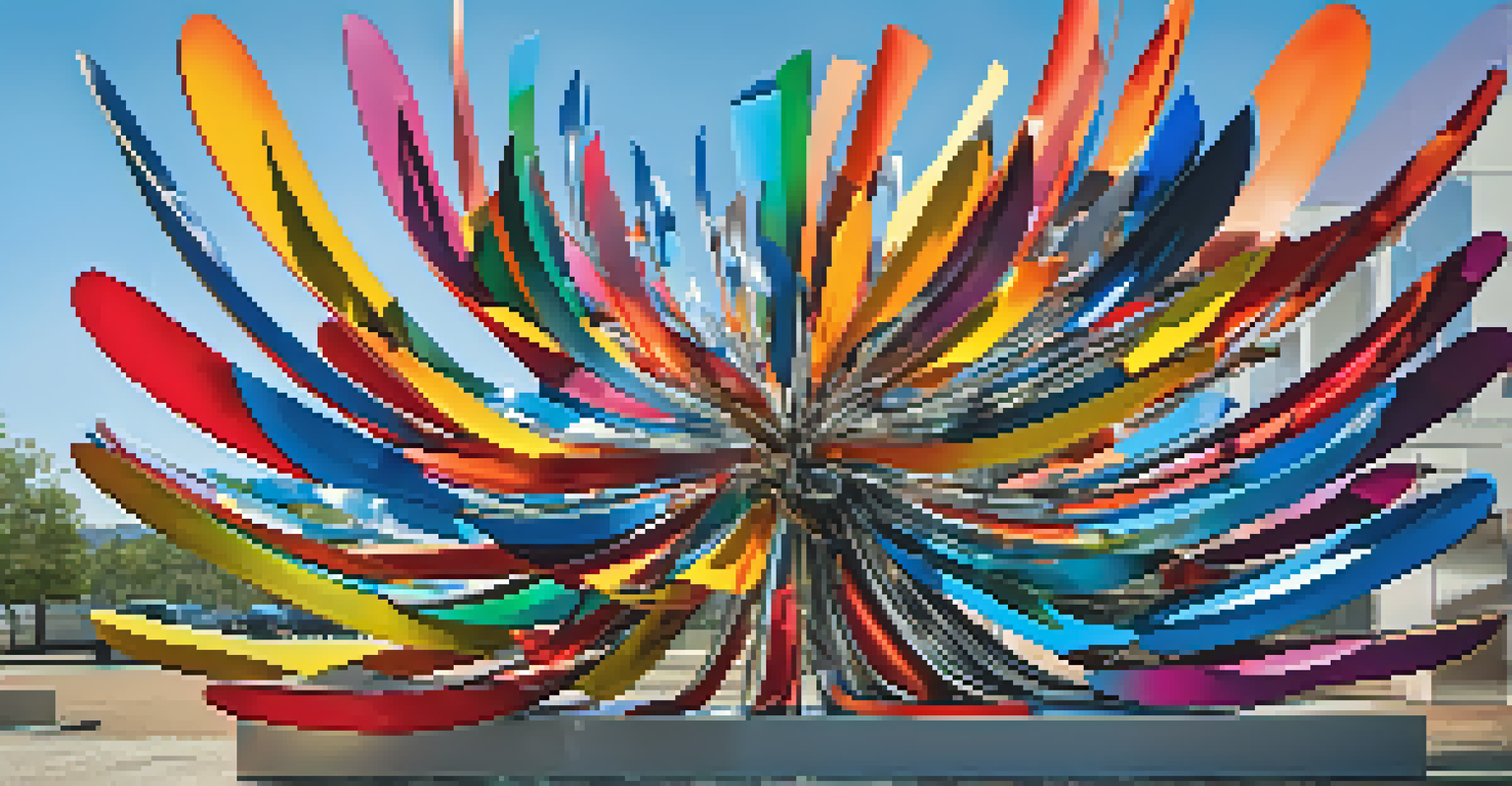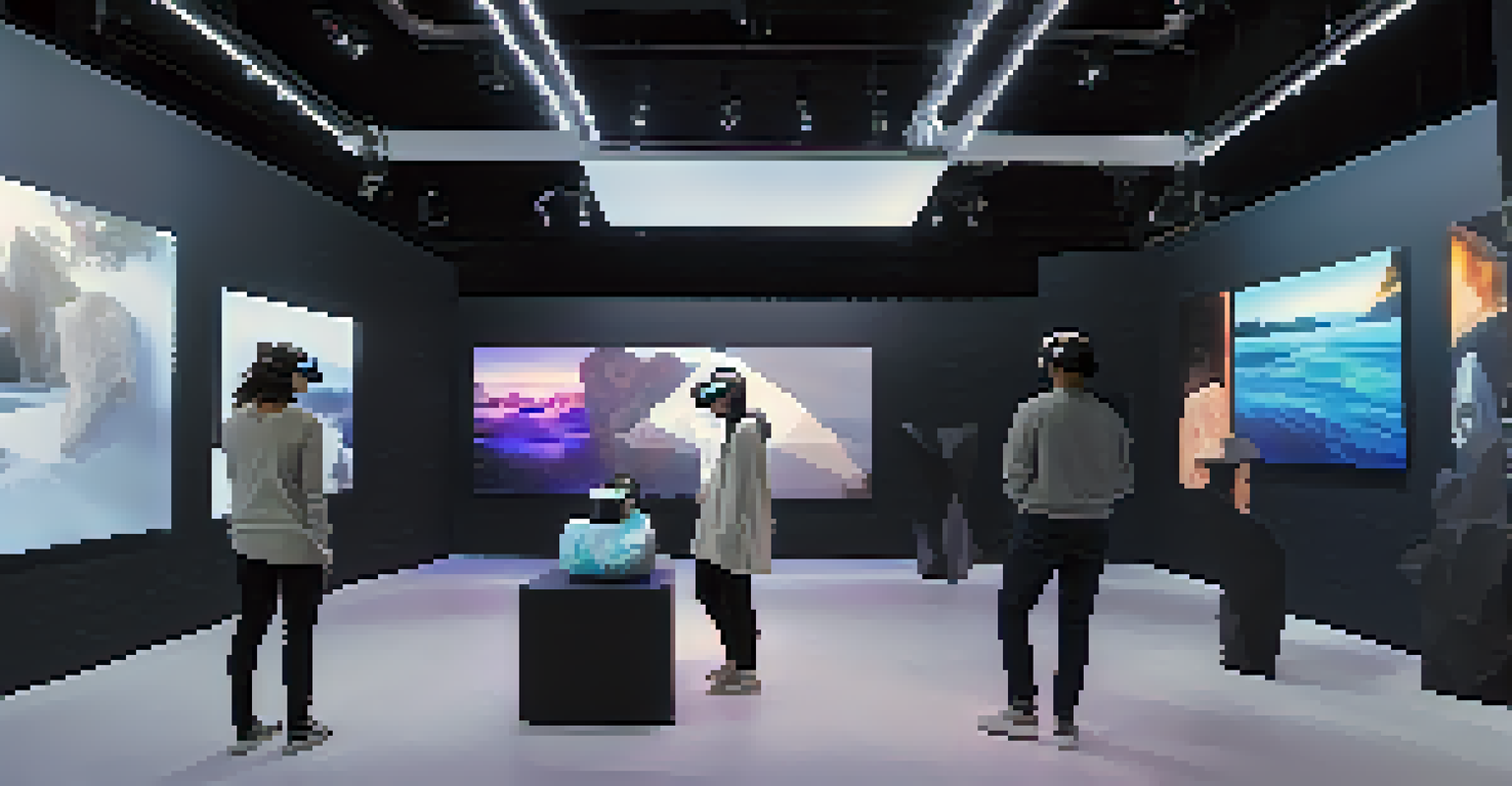Innovative Materials in Modern Sculpture and Carving Practices

The Evolution of Sculpture Materials Over Time
For centuries, sculptors have relied on traditional materials like marble and bronze. These time-honored choices reflect the aesthetic values and technological capabilities of their eras. However, as art has evolved, so too have the materials available, leading to exciting new forms of expression.
Art is not freedom from discipline, but disciplined freedom.
The shift towards modern materials began in the 20th century with the introduction of plastics and resins. Artists started to experiment, pushing boundaries and exploring new textures and shapes. This experimentation has opened the door for a diverse range of artistic styles and techniques.
Today, sculptors are blending traditional methods with innovative materials, creating pieces that resonate with contemporary audiences. This fusion fosters a dialogue between past and present, challenging perceptions of what sculpture can be.
Sustainable Materials Shaping Modern Sculpture
As environmental concerns rise, many artists are turning to sustainable materials in their work. Reclaimed wood, recycled metals, and biodegradable composites are just a few examples of how sculptors are prioritizing eco-friendliness. This shift not only reduces waste but also tells a compelling story of resourcefulness.

Artists like Chris Jordan have gained attention for using discarded materials to create striking pieces that comment on consumerism and waste. By incorporating found objects, these sculptors not only recycle but also infuse their work with deeper meaning. The choice of materials becomes a part of the narrative.
Evolution of Sculpture Materials
Sculptors are blending traditional techniques with modern materials, reflecting a dialogue between historical and contemporary art.
This trend towards sustainability not only benefits the planet but also resonates with audiences who are increasingly conscious of their environmental footprint. As viewers engage with these pieces, they become aware of their own consumption habits, making art a catalyst for change.
High-Tech Materials Revolutionizing Sculpture
The rise of technology has introduced a plethora of high-tech materials to the sculptor's toolkit. From 3D printed plastics to advanced ceramics, these materials enable artists to explore forms and structures that were previously unimaginable. This technological evolution is reshaping the landscape of modern sculpture.
The best artist has no conception that a marble block does not contain within itself the figure of a man.
For instance, 3D printing allows artists to create intricate designs with precision, revolutionizing the way sculptures are conceptualized and produced. Artists can quickly prototype their ideas, leading to greater innovation and experimentation. This accessibility is particularly empowering for emerging artists.
Moreover, high-tech materials often come with unique properties, such as lightweight strength or the ability to change color. These features not only enhance the aesthetic quality of the sculptures but also expand the possibilities for storytelling and emotional impact.
Interactive and Kinetic Sculptures: A New Frontier
Modern sculpture is not just about static forms; it's increasingly becoming an interactive experience. Artists are integrating motion and audience participation into their work, creating pieces that engage viewers on a deeper level. This shift reflects a desire to break the barriers between art and observer.
Kinetic sculptures, for example, use mechanisms that allow them to move, responding to environmental factors like wind or light. This dynamic quality adds an element of unpredictability, inviting viewers to experience the art in a fresh way. It's as if the sculpture has a life of its own.
Sustainability in Sculpture
Many artists are prioritizing eco-friendly materials, using reclaimed and recycled elements to create meaningful art that addresses environmental concerns.
Additionally, interactive installations often encourage visitors to touch, manipulate, or even contribute to the artwork. This not only fosters a sense of community but also challenges traditional notions of authorship and ownership in art.
Digital Art and Its Influence on Sculpture
The digital age has opened new doors for sculptors, creating a fascinating intersection between digital art and traditional sculpture. Artists can now use software to design complex forms, which can then be brought to life through various mediums. This blending of disciplines is redefining what it means to create art.
Digital tools allow for precision and experimentation that were once time-consuming and labor-intensive. Artists can visualize their ideas in 3D, making adjustments before committing to the physical medium. This flexibility fosters innovation, leading to groundbreaking works.
Moreover, digital art forms, such as virtual reality sculptures, challenge the very definition of sculpture itself. These immersive experiences invite viewers to engage with art in a way that transcends physical limitations, expanding the possibilities for artistic expression.
Cultural Influences on Material Choices in Sculpture
Cultural context plays a significant role in the materials artists choose for their sculptures. Different regions and communities have unique traditions and resources that influence artistic expression. For example, Indigenous artists often utilize natural materials that reflect their cultural heritage and connection to the land.
In contrast, urban artists may gravitate towards industrial materials, using concrete and steel to echo the environment around them. This choice often serves as a commentary on modern life, reflecting the complexities and challenges of urban existence. Each material tells a story that resonates with its cultural background.
Technology Transforms Sculpture
High-tech materials and digital tools are revolutionizing sculpture, enabling artists to experiment with new forms and engage audiences in innovative ways.
As artists explore their identities and histories, the materials they select become part of a broader narrative. This connection to culture enriches the artwork, inviting viewers to consider not just the aesthetic but also the social and historical context of the piece.
The Future of Sculpture: Trends to Watch
As we look to the future, several trends in materials and techniques are emerging in the world of sculpture. One notable trend is the increasing use of augmented reality (AR) to enhance physical sculptures, allowing viewers to engage with layers of digital information that complement the physical piece. This fusion of technology and art is set to redefine viewer experiences.
Additionally, the rise of collaborative projects is fostering a community-driven approach to sculpture. Artists are working together across disciplines, combining their unique skills to create multifaceted pieces that reflect collective voices. This trend not only enriches the art itself but also strengthens community ties.

Lastly, the ongoing exploration of unconventional materials—such as bio-art and living sculptures—promises to challenge our understanding of permanence and beauty in art. As artists continue to innovate, the future of sculpture is bound to be vibrant, diverse, and ever-evolving.